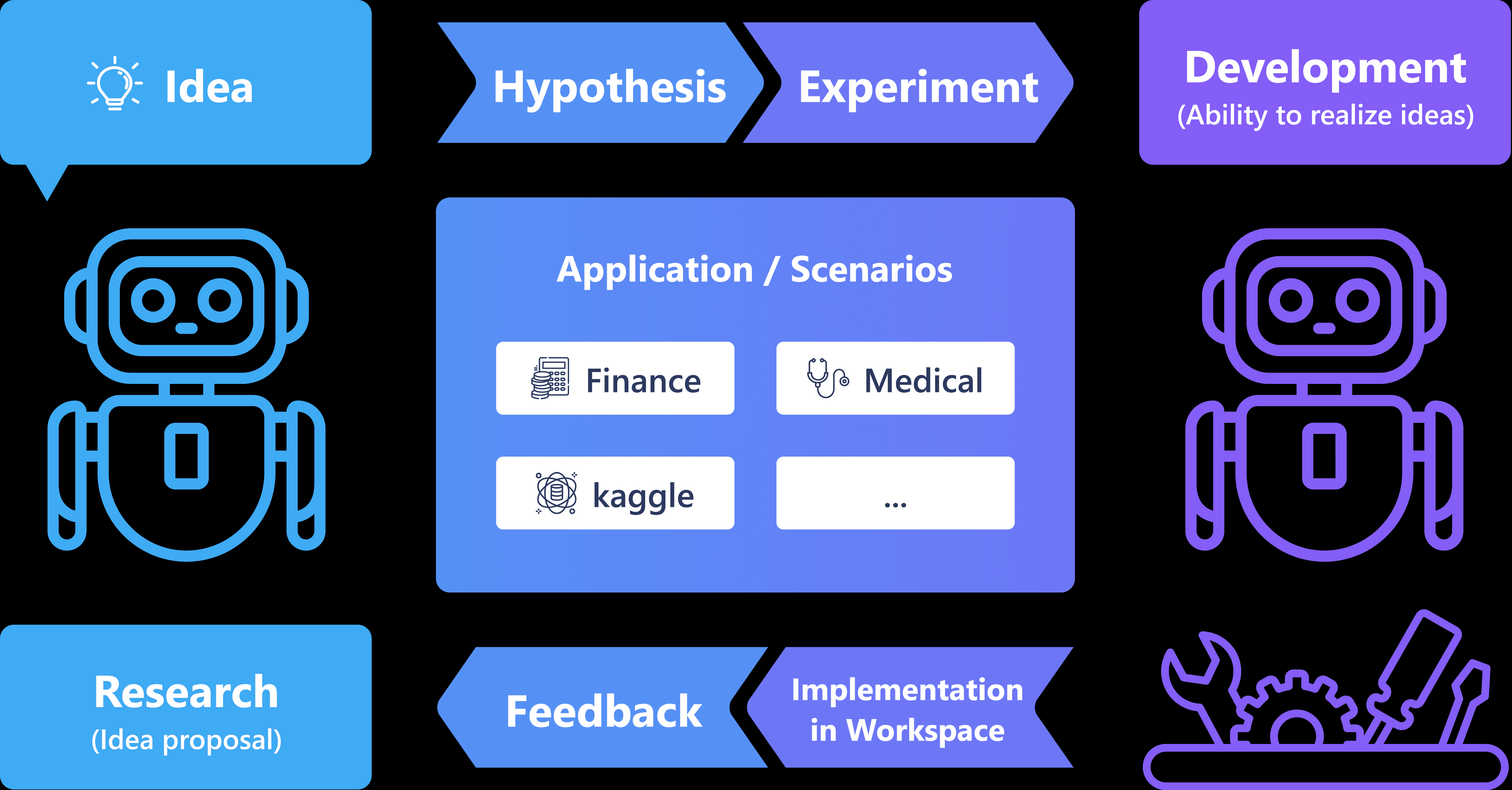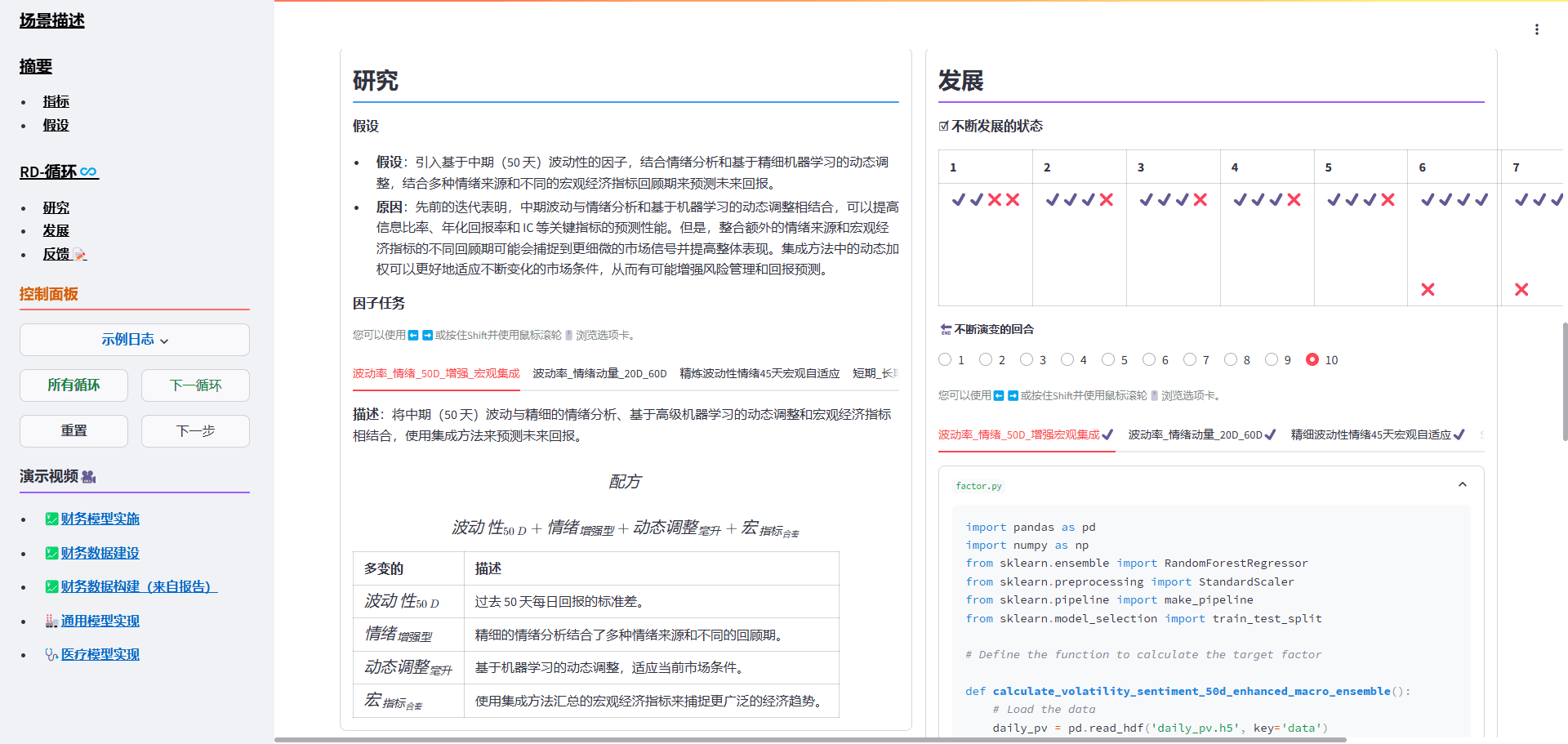RD-Agent is an open source tool from Microsoft designed to automate and optimize the research and development (R&D) process. The tool focuses on data-driven scenarios, and improves the efficiency of model and data development through artificial intelligence technology.RD-Agent integrates two key modules, Research and Development, to form an automated loop system with continuous feedback, which helps users to realize efficient R&D in the fields of finance, healthcare and so on.
Function List
- Automation Model Evolution: New models are automatically proposed and optimized.
- Automated Reading and Realization Research Paper: Extract key information from research papers and implement models.
- Quantitative trading applications: Support the development of quantitative trading strategies in the financial sector.
- Iterative Healthcare Forecasting: Data analytics and prediction in healthcare.
- Open source and community support: Users can contribute code and improve the project.
Using Help
Installation process
- Installing Docker: Ensure that Docker is installed on your system. refer to the official Docker page for installation.
- cloning project: Clone the RD-Agent project by running the following command in a terminal:
git clone https://github.com/microsoft/RD-Agent.git - Go to the project directory: Navigate to the cloned project directory:
cd RD-Agent - Building a Docker image: Run the following command to build the Docker image:
docker build -t rdagent . - Running Docker Containers: Start the Docker container using the following command:
docker run -it rdagent
Usage Process
- Starting the RD-Agent: Start the RD-Agent service in the Docker container.
- Select Scene: Select appropriate scenarios based on needs, such as financial quantification, medical prediction, etc.
- Configuration parameters: Configure relevant parameters, such as data source, model type, etc., according to the needs of the scenario.
- Running Tasks: Starting the task, the RD-Agent will automatically perform data processing, model training and result feedback.
- View Results: View task execution results and model performance through the interface provided by the RD-Agent.
Functional operation details
- Automation Model Evolution: The RD-Agent can automatically propose new model structures and continuously optimize model performance through feedback loops. Users only need to provide initial data and objectives, and RD-Agent will automatically complete the model generation and optimization.
- Automated Reading and Realization Research Paper: RD-Agent can automatically extract key information from research papers and realize the corresponding model structure. Users can upload papers and RD-Agent will automatically parse and generate code.
- Quantitative trading applications: In the financial sector, RD-Agent supports automated quantitative trading strategy development. Users can provide market data and RD-Agent will automatically generate and optimize trading strategies.
- Iterative Healthcare Forecasting: Applications of RD-Agent in the medical field include data analysis and prediction. Users can provide medical data, and RD-Agent will automatically perform data processing and model training to generate prediction results.








